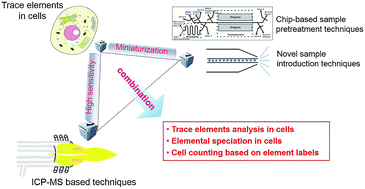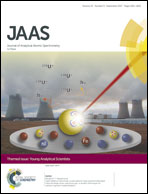Advances in ICP-MS-based techniques for trace elements and their species analysis in cells
Abstract
Trace elements play very important roles in cells. Newly inductively coupled plasma mass spectrometry (ICP-MS)-based methods with intensive performance are required to elucidate the mechanism of the bioeffect of these trace elements. In this mini-review, we briefly describe the state-of-the-art ICP-MS-based methods for trace elements and their species analysis in cells. Multi-dimensional chromatography or electrophoresis techniques combined with ICP-MS is essential for elemental speciation analysis. The development of chip-based microextraction techniques greatly improves the limits of detection for trace elements and their species in cells by ICP-MS-based techniques and reduces cell consumption. ICP-MS in time resolved mode or using laser ablation (LA) as the sample introduction technique is capable of analyzing total amounts of target trace elements in single cells. Recent progress in cell quantification by ICP-MS using elemental tagging strategy is also discussed. Overall, we believe that ICP-MS-based methods are very important for analyzing trace elements and their species in cells, and will benefit biomedical research and clinical applications more and more in the future.

- This article is part of the themed collections: Recent Review Articles, Atomic spectrometry for the analysis of biological samples and Young Analytical Scientists


 Please wait while we load your content...
Please wait while we load your content...